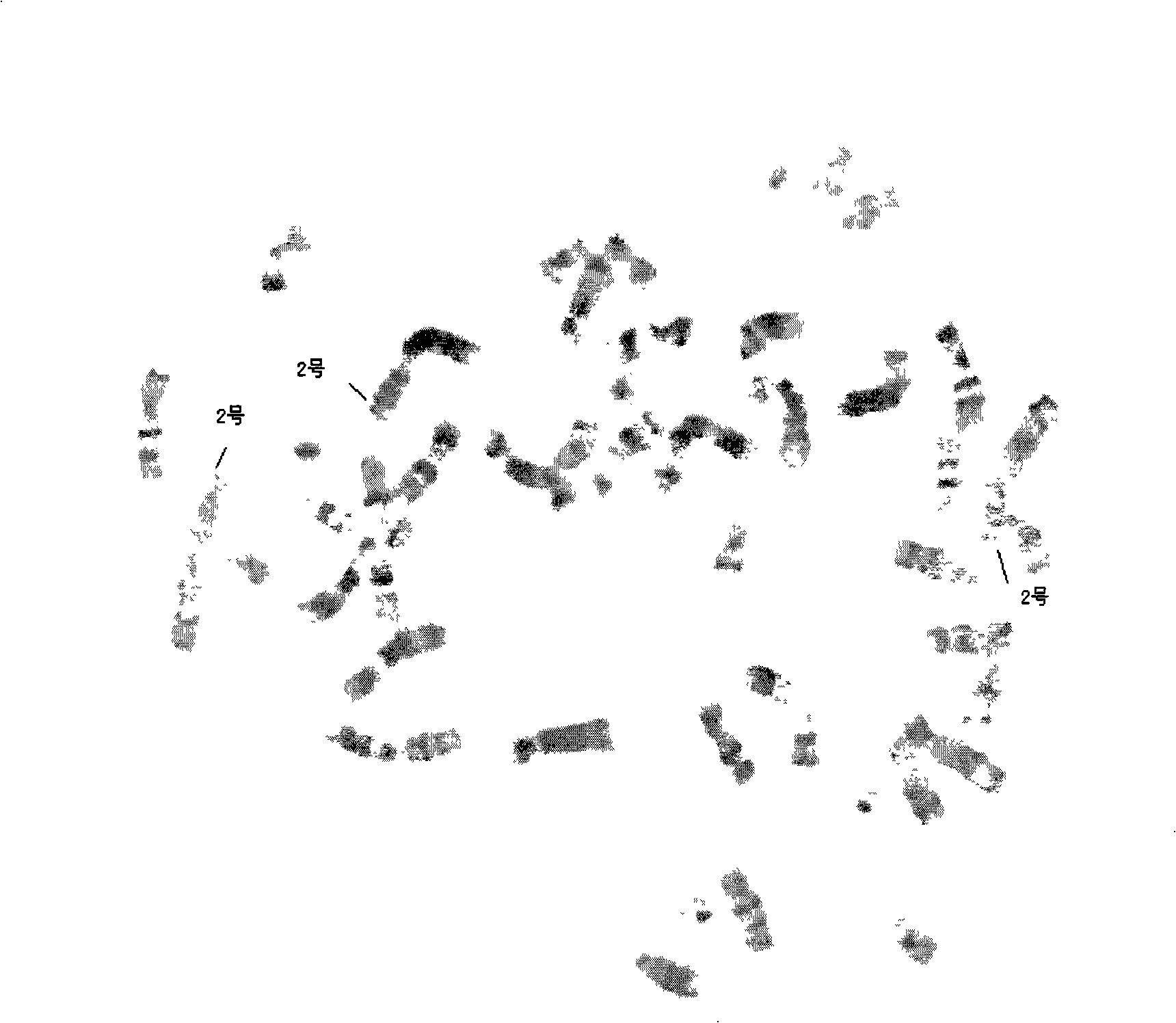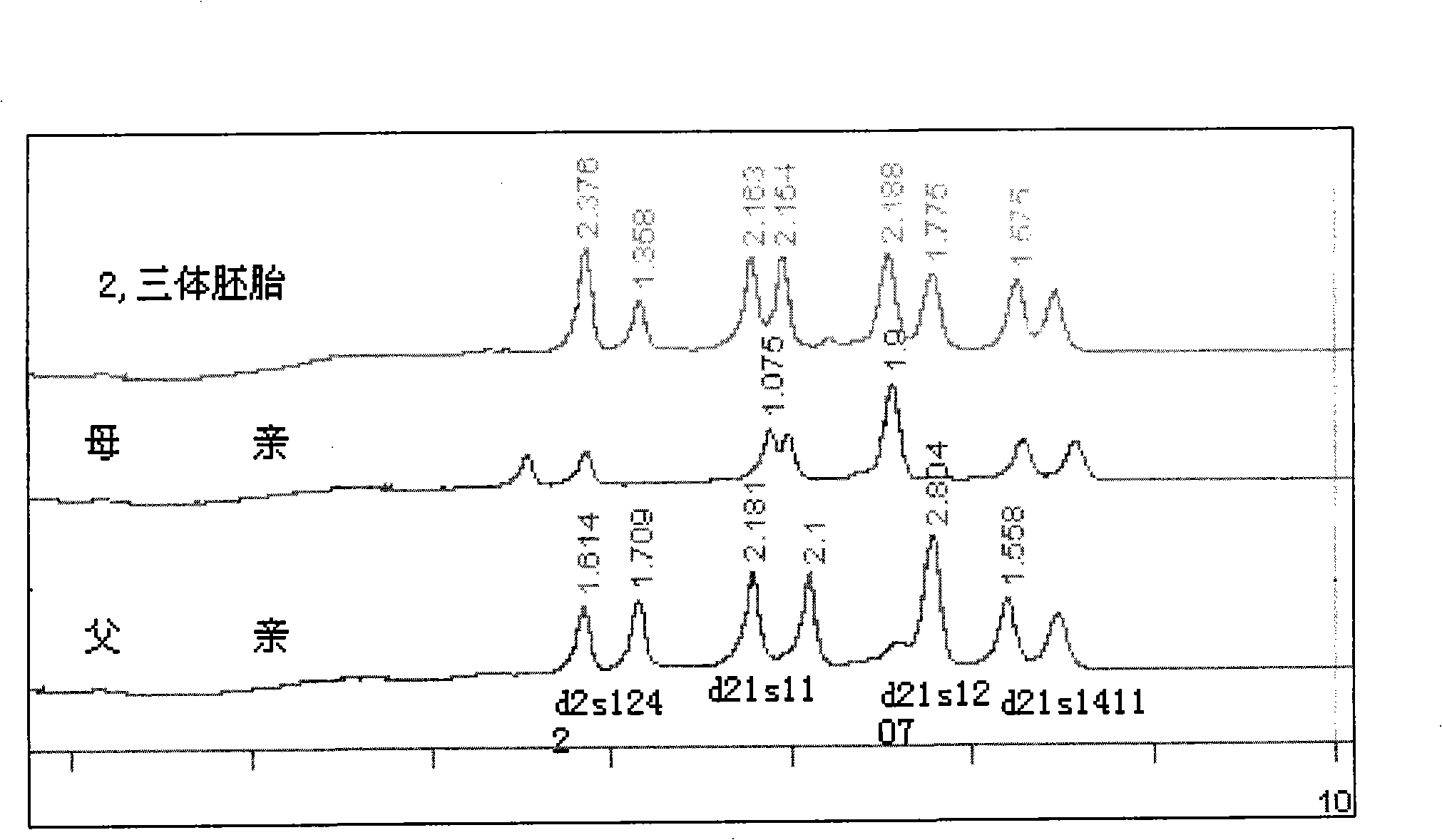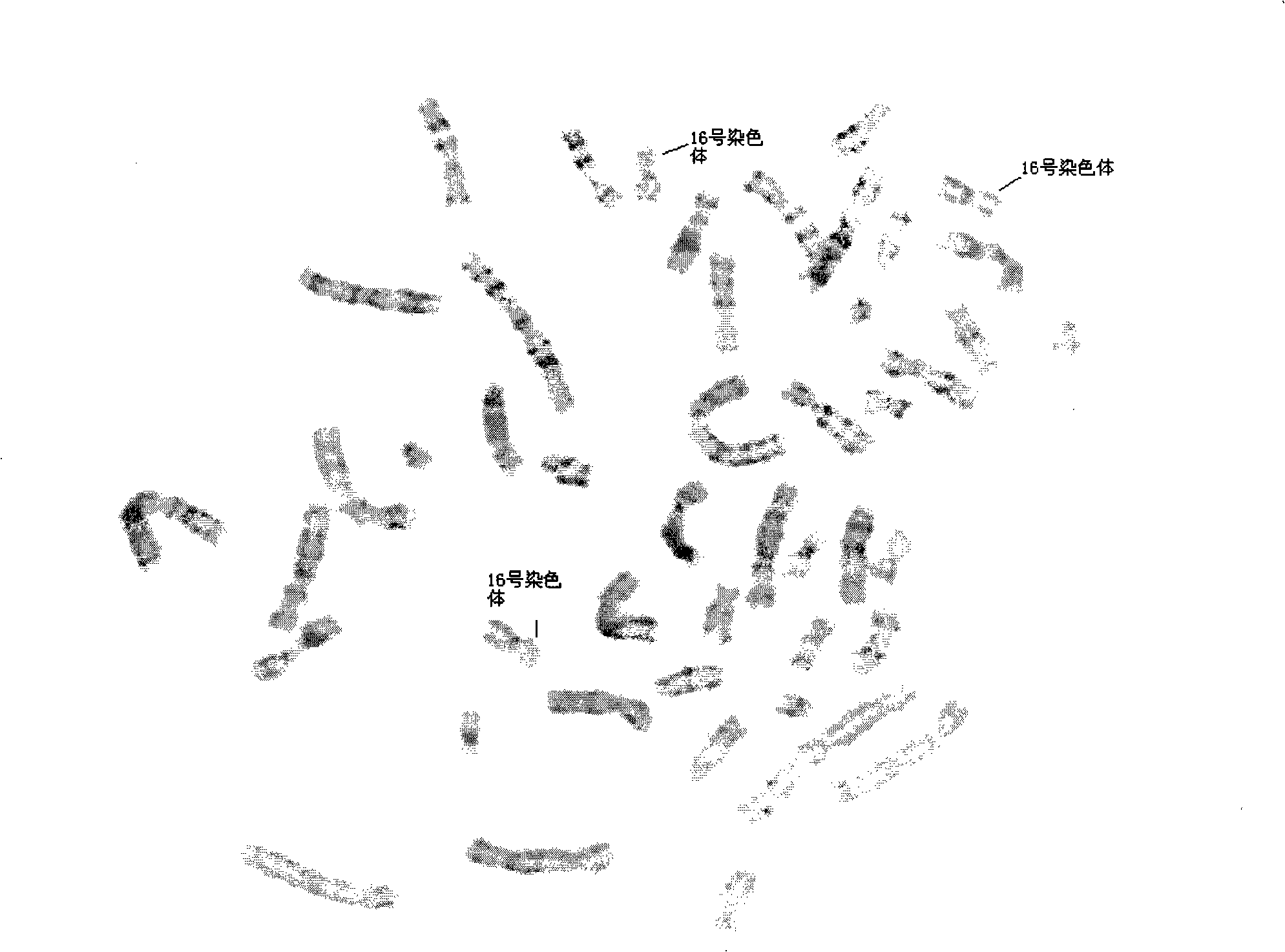Reagent kit for detecting chromosome numerical abnormalities resulting in natural abortion
A technology of chromosome number and spontaneous abortion, applied in the field of biochemistry, can solve the problems of large probe restrictions, limited application, and many affected factors, so as to avoid artificial access, improve accuracy, and reduce misdiagnosis
- Summary
- Abstract
- Description
- Claims
- Application Information
AI Technical Summary
Problems solved by technology
Method used
Image
Examples
example 12
[0072] A case of abnormal number of chromosome 12
[0073] 1. Experimental materials:
[0074] (1) The specimens in this case were collected from the villi specimens collected when the pregnant woman underwent uterine curettage after B-ultrasound indicated that the embryo stopped developing (no heartbeat, no fetal buds, etc.) at the 10th week of pregnancy, and the venous blood of both aborted couples was collected at the same time.
[0075] (2) kit of the present invention, its composition is as follows:
[0076] Primers: the primers of the group 1-7 of the present invention were synthesized by Shanghai Handsome Biotechnology Co., Ltd.
[0077] Enzyme: Taq enzyme from Beijing Dingguo Biotechnology Company was used.
[0078] Reagent: 10×buffer (20mM Tris-HCl, 10mM (NH 4 ) 2 SO 4 , 2mM MgCl 2 , 0.1% and 10mM KCl, pH8.8); TAKARA company dNTP (2.5mM each).
[0079] 2. Experimental method:
[0080] (1) Karyotype analysis:
[0081] Aseptically remove 15-20 mg of villous t...
example 216
[0109] A case of abnormal number of chromosome 216
[0110] 1. Experimental materials: The specimens in this case were collected from the villi specimens collected when the pregnant woman underwent uterine curettage after the B-ultrasound indicated that the embryo stopped developing (no heartbeat, no fetal buds, etc.) at the 7th week of pregnancy, and the venous blood of both aborted couples was collected at the same time .
[0111] 2. Experimental method:
[0112] (1) Karyotype analysis:
[0113] Aseptically remove 15-20 mg of villous tissue, roughly cut, finely cut, digested, add medium and inoculate into a culture bottle, 37 ° C, 5% CO 2 Cultivate in the incubator for 5-10 days. Chromosomes in the cells were extracted, and made into glass slides after hypotonicity, pre-fixation, and twice-fixation. After drying, conventional G-banding was performed.
[0114] (2) kit analysis of the present invention:
[0115] a. Use the first group of primers of the kit of the present ...
example 3
[0142] The diagnostic rate statistics of example 3 kits of the present invention
[0143] 1. Experimental materials:
[0144] Villi: 6-12 weeks of gestation, the villi specimens collected when curettage was performed after the B-ultrasound found that the embryo had ceased to be fertile (no heartbeat, no fetal bud, etc.).
[0145] Peripheral blood: Peripheral blood of abortion couples.
[0146] 2. Experimental method:
[0147] (1) Obtaining the theoretical heterozygosity of the selected STR site in the present invention:
[0148] The theoretical heterozygosity of STR loci was searched through the www.gdb.org database.
[0149] (2) Statistics of the actual heterozygous ratio of the selected STR of the present invention:
[0150] The actual heterozygous ratio of STR was calculated by counting the number of heterozygous peaks at each locus after 9 sets of PCR on 120 DNA samples from 40 abortion families (abortion villi DNA and abortion couples' peripheral blood DNA). Actual h...
PUM
 Login to View More
Login to View More Abstract
Description
Claims
Application Information
 Login to View More
Login to View More - R&D
- Intellectual Property
- Life Sciences
- Materials
- Tech Scout
- Unparalleled Data Quality
- Higher Quality Content
- 60% Fewer Hallucinations
Browse by: Latest US Patents, China's latest patents, Technical Efficacy Thesaurus, Application Domain, Technology Topic, Popular Technical Reports.
© 2025 PatSnap. All rights reserved.Legal|Privacy policy|Modern Slavery Act Transparency Statement|Sitemap|About US| Contact US: help@patsnap.com



